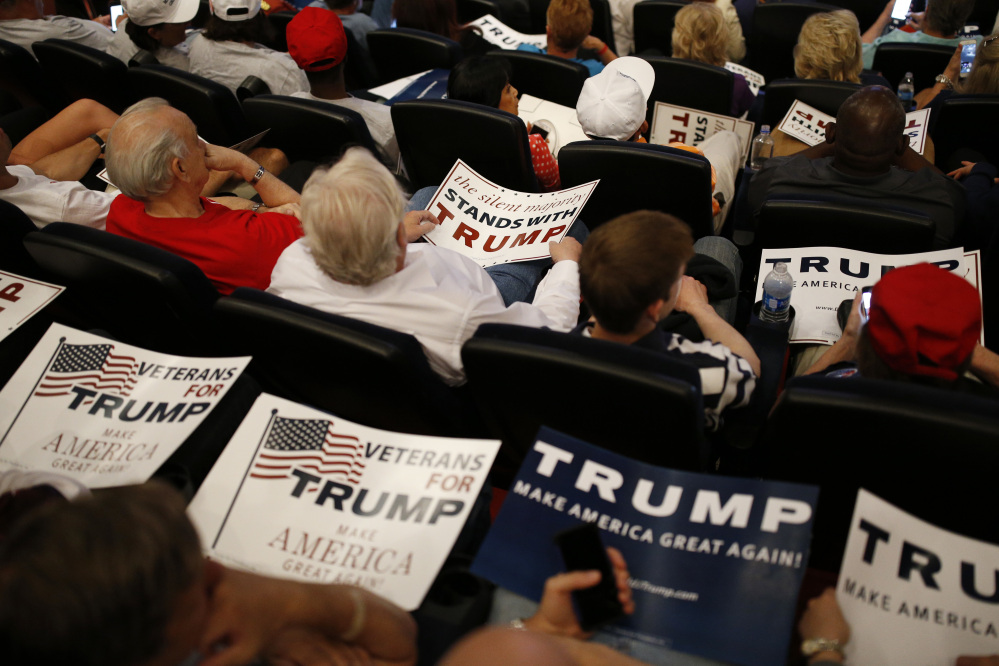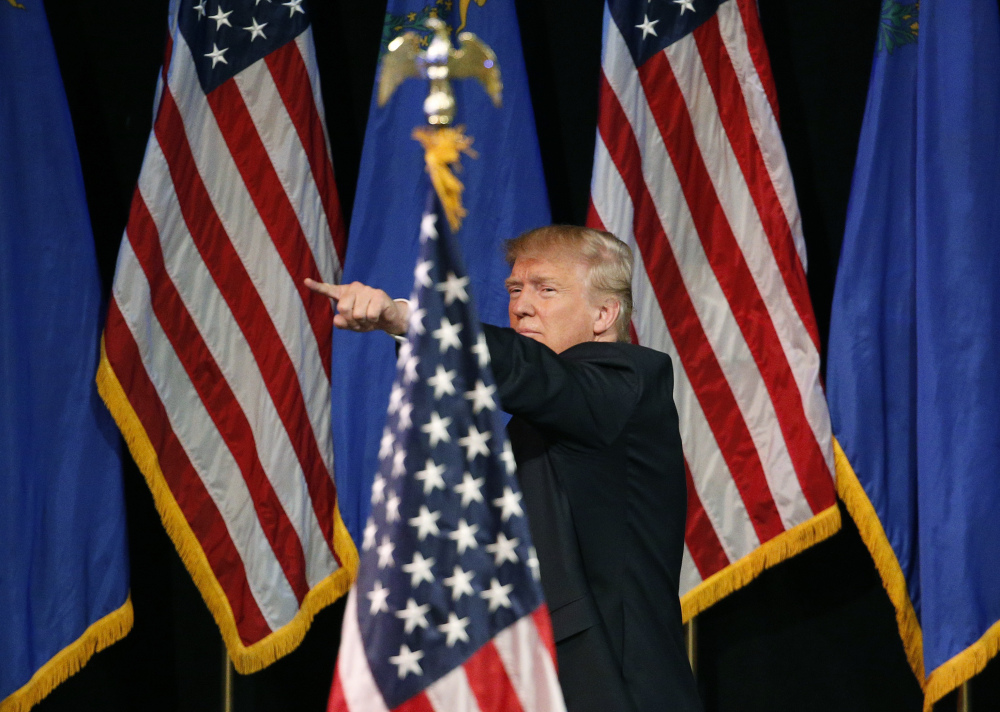The hole that Donald Trump has dug for himself keeps getting deeper. On nearly every front, his position continues to deteriorate. Unless he reverses course, Republicans are heading toward a wrenching week at their convention in Cleveland next month and potentially worse in November.
National polls alone provide an incomplete picture of the current state of the presidential race, but the shifts over the past few weeks should make Republicans beyond nervous. What looked like a tight contest between Trump and Hillary Clinton in late May has morphed into a Trump deficit that cannot be wished away.
The RealClearPolitics poll average now gives Clinton a lead of almost six percentage points over Trump, a marked shift from a month ago. Perhaps even more telling is that every poll on the RCP list that was conducted entirely in June showed Clinton leading. That’s a change from the month of May, when several polls showed Trump leading narrowly.
TERRIBLE TWO WEEKS FOR TRUMP
Given the terrible two weeks Trump has gone through, it’s no surprise that the trend line also indicates that her lead is widening. The last four polls on the list – all completed in the past week – put her margin at 12, nine, five and six points. Four polls completed earlier in June showed her with leads of three, four, eight and three points.
Clinton is not approaching 50 percent in any of these head-to-head polls. With one exception, she is below 45 percent, hardly impressive. But Trump has not broken 40 percent in any of the past seven polls listed on the RCP average. Overall, the average of the recent polls puts Clinton at 44 percent and Trump at 38 percent.
More and better polls from key states will help to clarify the depth of Trump’s problems. Viewed from the angle of the electoral map, the question is: Which states that Mitt Romney lost in 2012 can Trump actually win? And: Are there states Romney won that now could go to Clinton?
One caveat worth noting is that there is a significant percentage of the population that remains undecided, or at least undeclared, in the current polls. A Washington Post-ABC News survey released last week pointed to the reasons why. The survey measured only the favorability ratings for the two presumptive nominees, and it was another bleak indicator of the unhappy choice Americans see before them.
Clinton’s favorable rating was just 43 percent – about the same number she is drawing in a ballot test – while her unfavorable rating was 55 percent. Trump’s favorable rating was a crippling 29 percent, with 70 percent of the public saying they have an unfavorable view of him. A majority of adults – 56 percent – said they have a strongly unfavorable view of him, including one-fifth of all Republicans.
When the electorate is divided into different population groups, it’s even clearer how much trouble Trump has created for himself. Trump’s base during the primaries was among white, working-class voters. But it’s become apparent that his real base is among white men. Among white men without a college degree, he’s actually in positive territory. Among white women without a college degree, he’s not.
Overlooked perhaps is Clinton’s image deficit among whites, particularly among white men. Just 23 percent of white men view her favorably, compared with 75 percent unfavorable. But she counters with strongly positive numbers among nonwhites, who are 2 to 1 positive about her.
All of this has put Republicans on edge about November. Trump is frustrated that leading Republicans have not all coalesced behind his candidacy, but without some change on his part, he could be an island of his own in November. Fear of a Clinton presidency remains the lone rationale for many Republicans who otherwise recoil from things Trump has said lately.
A GREEN LIGHT TO SCATTER
House Speaker Paul D. Ryan, R-Wis., who has endorsed but not truly embraced Trump, now says this is a decision of conscience for Republican elected officials. That’s a green light to scatter. The Bush family remains on the sidelines. Ohio Gov. John Kasich, who lost out to Trump for the Republican nomination, says he’s not ready to endorse and might be a permanent holdout, even though he will be the host governor at the Cleveland convention. Maryland Gov. Larry Hogan said last week that he would not support Trump.
Some of Trump’s supporters have grown weary trying to defend him. Others who put Trump on notice after he attacked on racial grounds the federal judge overseeing the lawsuit against Trump University have found little since to convince them that the presumptive nominee will meet the standard they would like to see. In fact, after his attack on Muslims in the aftermath of last Sunday’s mass shooting at the Pulse nightclub in Orlando, he seems farther than ever from meeting that test.
The Republican Party’s Senate majority is at risk. Republicans hope they can insulate vulnerable Senate incumbents from the Trump effect, but that’s no easy task. Only a clean break with the presumptive nominee will give those senators the freedom to campaign on their own. Even the most tepid of endorsements would leave them answerable to everything he might say or do over the next four-plus months.
Despite the obvious weaknesses of Clinton as a candidate, her campaign operation is now far better prepared to wage a general-election campaign than is Trump’s. The New York billionaire is looking to outsource many of the mechanics of the campaign to the Republican National Committee. But the fundraising needed to underwrite those operations has been slow.
Send questions/comments to the editors.



